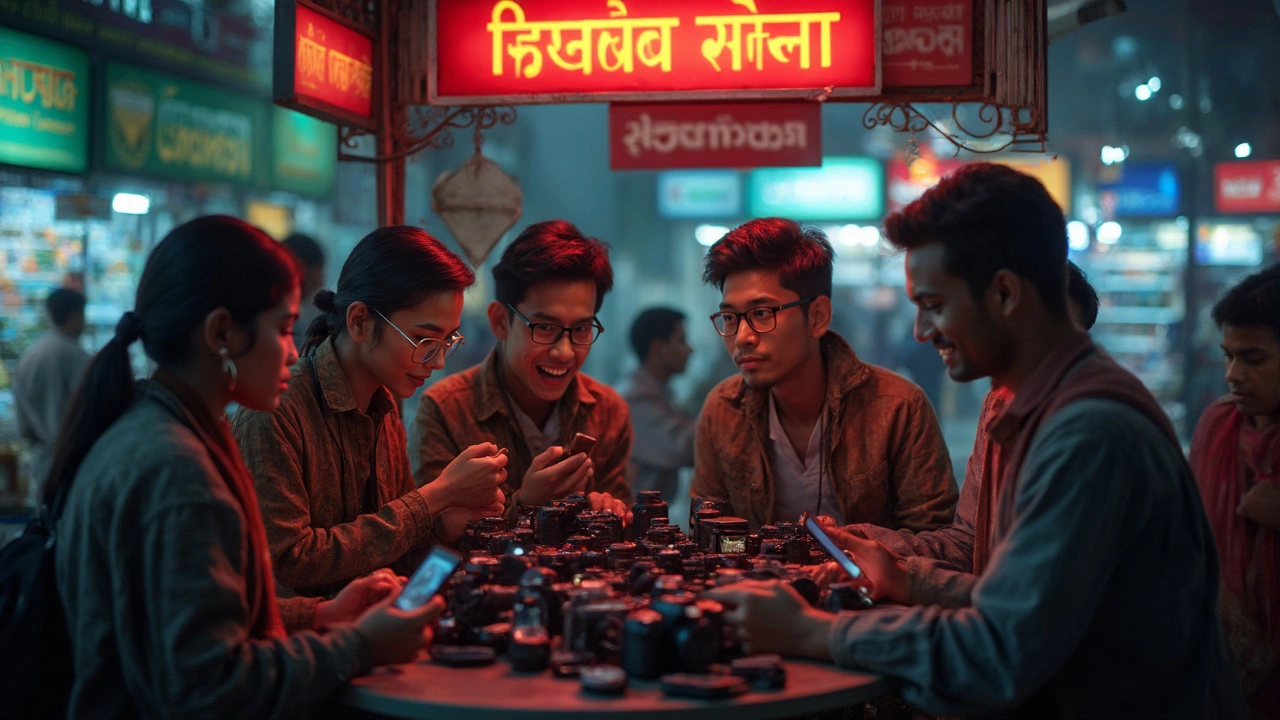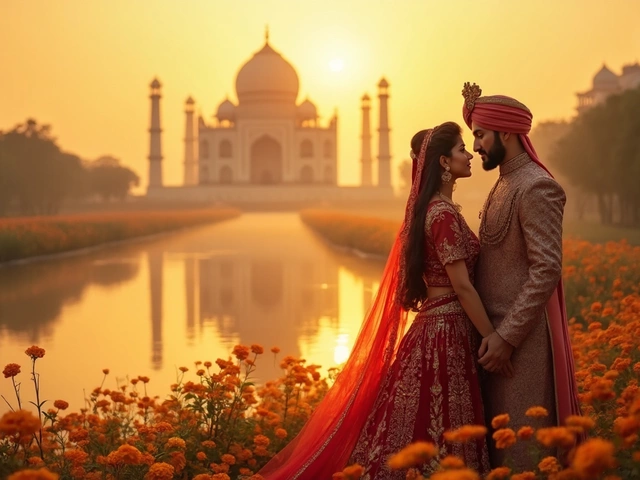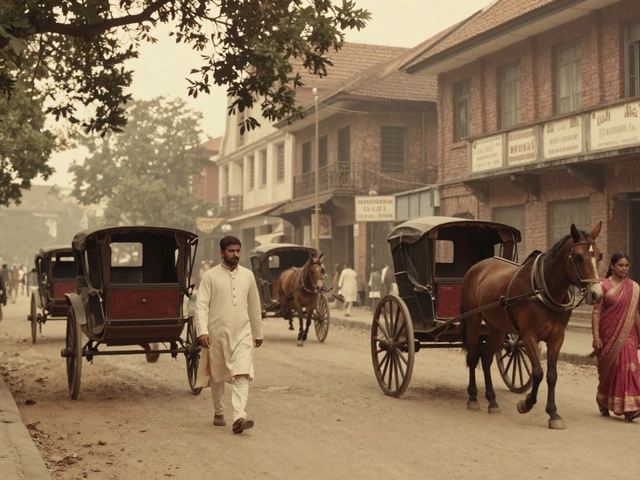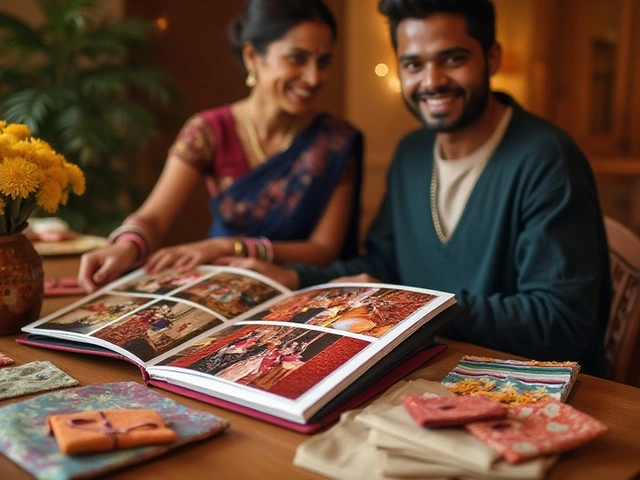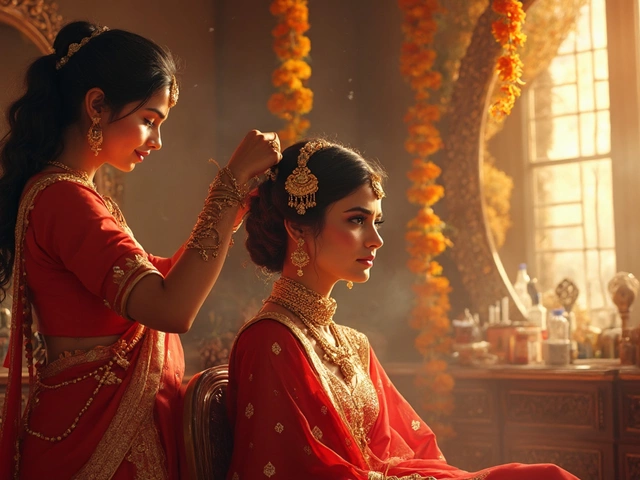People love to brag about who’s got the best camera, but most folks miss what “highest camera quality” really means. It’s not just about the number of megapixels splashed on the box. Megapixels matter, sure, but the magic happens under the hood—think sensor size, lens quality, autofocus speed, and that wild new AI processing everyone’s buzzing about.
If you’re just scrolling Instagram, your phone cam probably gets the job done. But if you want to print billboard-sized photos or catch every hair on your pet’s nose, you need to know what actually makes a camera crush the competition. In India, there’s no shortage of options—from high-end DSLRs and mirrorless stalwarts to some pretty wild smartphone tech launching every month.
No camera is perfect for everything. So before you drop lakhs on gear or chase the newest phone hype, it pays to understand what truly sets the top contenders apart. Let’s break down the science, the numbers, and the real results that get you the best photo quality on the planet right now.
- Chasing Ultimate Image Quality
- Megapixels vs. Sensor Size
- Pro DSLRs and Mirrorless Monsters
- Smartphones Catching Up?
- Specialty Cameras Shooting for the Stars
- Choosing the Best Camera for You
Chasing Ultimate Image Quality
What separates everyday cameras from those at the very top? When you’re looking for highest camera quality, it’s about how well a camera captures real detail, deals with tricky lighting, and makes photos pop even before editing. It’s why wildlife photographers, wedding shooters, and even YouTubers obsess over the right gear. The difference is obvious when you zoom in or print out a big poster—the details either stay sharp or turn into a blocky mess.
Several factors decide who’s the boss:
- Sensor size – Bigger sensors suck in more light and give you clearer, crisper shots. Full-frame sensors (like those in top DSLRs and mirrorless cameras) always beat smaller ones for pure image quality. Medium format sensors? Even bigger, so think next-level sharpness.
- Megapixels – More megapixels sound great, but only if the sensor is big enough to handle them. 60-100MP cameras exist and actually make a difference when you want to crop or print huge photos.
- Lens quality – A killer lens can make or break your shot. Even the best sensor can’t 'fix' bad glass.
- Autofocus system – Fast, accurate autofocus means more keepers and fewer blurry photos. Tracking tech, face/eye detection, and AI add serious value here.
- Image processors – Modern cameras have insane processing chips that tackle noise, tweak colors, and apply smart tricks instantly. This is a game-changer in low light or action photography.
Check out the rankings from 2024—cameras like the Sony A1, Canon EOS R5, and the Fujifilm GFX100 II (a beastly medium format) top international review charts. Walk into a pro studio or Nat Geo shoot, chances are, you’ll see one of these monsters plugged in.
| Camera Model | Sensor Size | Megapixels |
|---|---|---|
| Fujifilm GFX100 II | Medium Format | 102 MP |
| Sony A1 | Full Frame | 50.1 MP |
| Canon EOS R5 | Full Frame | 45 MP |
When you’re on the hunt for the best cameras India has to offer, keep your eyes peeled for these specs and real-world results. The price tags? Not for the faint-hearted. But if you want the brighest, sharpest, most reliable images, chasing ultimate image quality means paying close attention to sensors, lenses, and processing power.
Megapixels vs. Sensor Size
So, what’s the deal with high megapixel cameras? Sure, that 200MP badge on a smartphone sounds impressive. But here’s the catch: a huge chunk of crisp detail actually comes from the sensor size, not just the megapixels. The sensor is the light-catching surface inside your camera. Bigger sensor, better light capture, less noise, juicier colors—even at lower megapixel counts.
Let's get real. Packing more pixels onto a tiny sensor (like in most phones) can actually make things worse in low light. That’s why you might spot noisy, grainy shots even if your phone camera claims sky-high megapixels. Meanwhile, a full-frame mirrorless or DSLR with ‘only’ 24MP often crushes detail and dynamic range compared to a 108MP phone cam.
If you’re comparing cameras, always look beyond megapixel numbers. Here’s how different sensor sizes stack up:
| Camera Type | Typical Sensor Size | Image Quality (with good lens) |
|---|---|---|
| Smartphones | ~1/1.3 inch | Great for web, struggles in low light |
| APS-C Mirrorless/DSLR | ~23 x 15mm | Sharp detail, strong in most light |
| Full-frame Mirrorless/DSLR | ~36 x 24mm | Top-notch, awesome for pros |
| Medium Format | ~44 x 33mm (or bigger) | Pinnacle of highest camera quality |
Want giant prints or pixel-perfect detail for crops? That’s where more megapixels are your friend—if paired with a larger sensor. For everyday use, a good 12 or 24MP sensor with big pixels (like in premium mirrorless cameras) usually beats blockbuster megapixel numbers on a tiny sensor.
Bottom line: Chasing highest camera quality means finding the right balance. Always ask about the sensor size before falling for the megapixel hype. If you’re stuck choosing, think about what you’ll actually shoot—family pics, landscapes, Instagram—then pick a camera that nails what matters most for you.
Pro DSLRs and Mirrorless Monsters
When it comes to highest camera quality, pro DSLRs and mirrorless cameras are still running ahead. These beasts are built for folks chasing every last bit of detail, sharpness, and control in their shots. They pack bigger sensors, sharper lenses, and long battery life—making them ideal for wedding shooters, wildlife pros, and anyone who needs reliable performance, shot after shot.
If you’re looking for the true giants in camera tech, check out models like the Canon EOS R5, Sony A1, and Nikon Z9. These mirrorless cameras are packing massive full-frame sensors (36mm x 24mm) and can push out images at crazy resolutions—like the Sony A1’s 50.1 megapixels. These sensors pull in more light, which means you get clearer low-light shots and true-to-life colors, even when the sun’s long gone.
| Model | Megapixels | Sensor Type | Max Video |
|---|---|---|---|
| Sony A1 | 50.1 | Full-frame CMOS | 8K @ 30fps |
| Canon EOS R5 | 45 | Full-frame CMOS | 8K @ 30fps |
| Nikon Z9 | 45.7 | Full-frame Stacked CMOS | 8K @ 30fps |
| Canon 5D Mark IV (DSLR) | 30.4 | Full-frame CMOS | 4K @ 30fps |
These cameras have phase-detect autofocus, mechanical and electronic shutters for blazing-fast bursts, and weather sealing—good luck breaking them. The electronic viewfinders on the latest mirrorless models give you a real-time preview so what you see is exactly what you’ll get.
In India, if you want best cameras for low light gigs (think weddings or festivals), the mirrorless options are dominating. Sony's autofocus tracking is scary good—almost like the camera knows who you want in focus before you do. Meanwhile, DSLRs like the Canon 5D Mark IV are still legends for durability and classic optical viewfinder feel.
- If you shoot action or wildlife, try the Nikon Z9—blistering 20fps in RAW.
- Video shooters should peek at the Canon EOS R5 or Sony A1 for sharp 8K footage and killer in-body stabilization.
- If you love manual controls, both types offer deep menus and custom buttons for every shooting style.
The main downside? They’re heavy, bulky, and won’t fit in your pocket. But for real image nerds, nothing else comes close to this performance, even if your phone claims to have night vision. If you want highest camera quality and the best tools available right now, this is where you’ll find them.
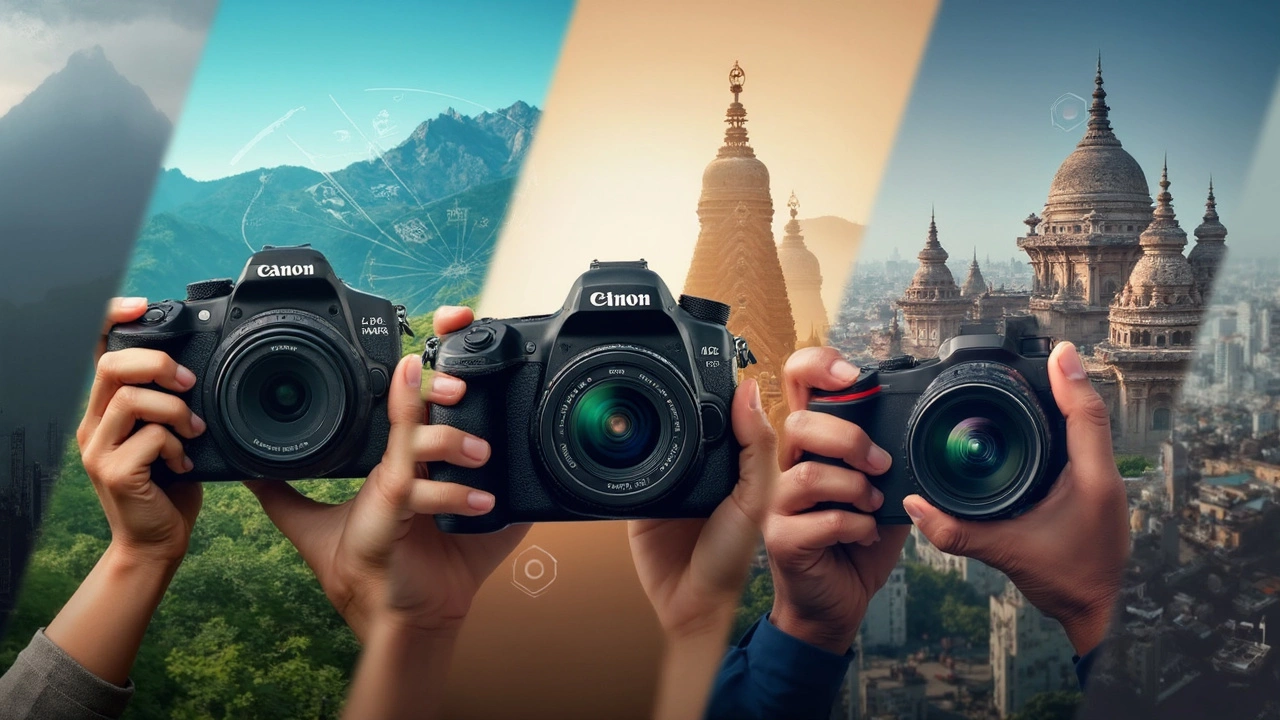
Smartphones Catching Up?
The smartphone camera race has been pure madness over the last few years. It's wild how close top phones now get to pro gear, at least for social media and daily photography. Every brand’s fighting to be crowned with the highest camera quality, tossing hardware and software tricks at the problem.
Take the Samsung Galaxy S24 Ultra and Apple iPhone 15 Pro Max. Both pack sensors over 1 inch, advanced periscope lenses for zoom, and computational photography that cleans up noise in low light. Google’s Pixel 8 Pro gets attention for its image processing—seriously, the way it brings out details in low-light shots is nuts. Xiaomi’s 14 Ultra takes things further with a 1-inch Sony sensor, and it’s now giving some entry-level DSLRs sleepless nights.
Here’s a quick look how some flagship phones stack up on camera tech as of 2025:
| Model | Main Sensor | Max Resolution | Optical Zoom |
|---|---|---|---|
| Samsung Galaxy S24 Ultra | 200MP (1/1.3 inch) | 200 MP | 5x |
| Xiaomi 14 Ultra | 50MP (1 inch) | 50 MP | 5x |
| Apple iPhone 15 Pro Max | 48MP (1/1.28 inch) | 48 MP | 5x |
| Google Pixel 8 Pro | 50MP (1/1.31 inch) | 50 MP | 5x |
But, even the best cameras India gets in a smartphone don’t match pro DSLRs or mirrorless monsters for control, real optical bokeh, or detail in tricky lighting. Where phones win is ease of use—AI takes care of the heavy lifting, so you always get a shot that’s social-ready, even if you don’t know what ISO or aperture mean.
If you care about shooting RAW, controlling every setting, or doing huge prints, flagship phones still aren't there. But if you want jaw-dropping results for the ‘Gram with zero setup, the latest smartphones have almost caught up—at least for everyday use.
Specialty Cameras Shooting for the Stars
When people talk about highest camera quality, they usually think of regular cameras. But there’s a whole world of specialty cameras that make even pro DSLRs look basic. These are the monsters used for space missions, science labs, movie sets, and industrial inspections—where camera resolution can get downright absurd.
Let’s start with astronomy. Big observatories like the Subaru Telescope in Hawaii use gigantic CCD sensors. In 2024, the Vera C. Rubin Observatory announced their LSST Camera—a beast with a jaw-dropping 3,200 megapixels. That’s not a typo. This camera snaps such detailed images that you could spot a golf ball from 25 km away. But don’t pull out the credit card—it’s the size of a car and built for scanning whole galaxies.
Then you’ve got high-end industrial cameras, like the Phase One XF IQ4 150MP. This digital medium-format camera is a favorite with museums and archivists trying to preserve ancient art down to the tiniest brush stroke. It’s also used by some top commercial photographers who need nothing less than perfect camera quality.
On a different note, security and scientific research use multi-spectral and thermal cameras. FLIR’s R&D cameras, for example, don’t just see in traditional light—they spot heat and chemical signatures, giving labs, airports, and factories X-ray vision. Not sexy for selfies, but critical in real-world applications.
- 3,200 Megapixel LSST Camera: Astronomy, deep-space surveys
- 150 Megapixel Phase One XF: Art, fashion, commercial photography
- Thermal and multi-spectral cameras: Security, research, environmental monitoring
| Camera Model | Megapixels | Main Use |
|---|---|---|
| LSST (Vera C. Rubin) | 3,200 | Astrophysics, deep space imaging |
| Phase One IQ4 | 150 | Art, commercial, archival |
| Canon EOS R5 | 45 | Professional photography |
Most of these specialty rigs are way out of reach for regular people or your average best cameras India list, but they set the bar for what’s technically possible. And bits of their tech slowly trickle down to more affordable gadgets over time. So who knows—maybe in a decade you’ll have space-grade resolution in your back pocket.
Choosing the Best Camera for You
Staring at a wall of camera specs feels overwhelming, even for seasoned geeks like me. In 2025, nailing down the best cameras India isn’t just about finding the one with the highest megapixels or the biggest sensor. You need to think about how you actually use your camera day to day, how much lugging around heavy gear annoys you, and if you even need all those pro features.
Here’s a quick reality check: That £10-lakh Hasselblad medium format might have unreal camera resolution and dynamic range, but it’s useless if you’re hiking up a hill in Himachal or just want epic WhatsApp pics of your dog. And don’t forget, even your friend’s flagship phone can pull off Instagram magic thanks to smart software and what the brands like to call "computational photography." So how do you really pick?
- Figure Out What You’ll Shoot: Wildlife and sports? Fast autofocus and burst speed matter more than raw megapixels. Portraits? Look for bigger sensors and good prime lenses. Travel and vlogs? Lightweight mirrorless, or even a feature-packed phone, wins convenience battles.
- Set Realistic Budgets: The gap between entry-level and pro gear is serious, not just in price but also learning curve. For most folks in India, mid-range mirrorless like the Canon EOS R7 or Sony Alpha 6700 deliver epic camera quality without feeling like a part-time job.
- Don’t Chase Hype: That 200MP phone camera sounds wild, but compare its real world results versus a lower-megapixel camera with a larger sensor. Spoiler: More megapixels don’t always mean crisper photos, especially in low light.
- Try Before You Buy: Visit a store and actually handle the camera. If you hate the menu or grip, it’ll just gather dust. Some stores let you try lenses or have demo units.
- Consider After-Sales Service: Brands like Canon, Sony, and Nikon have wider service networks in India, so repairs and spares are less of a headache.
If you need the hard numbers, here’s how a few popular camera types typically compare:
| Camera Type | Resolution (MP) | Sensor Size (mm) | Weight (approx.) |
|---|---|---|---|
| Flagship Smartphone | 50-200 | 1/1.12" | 190g |
| Mirrorless (APS-C) | 24-33 | 23.5 x 15.6 | 500-700g |
| Mirrorless (Full Frame) | 24-61 | 36 x 24 | 700-900g |
| Medium Format | 50-100+ | 44 x 33 | 1-2 kg |
One last thing—don’t fall for the idea that you need the absolute highest camera quality in the world. Even my partner, Meera, who swears by her phone cam, gets killer shots using good light and some patience. Photography’s about practice, not just pixels! Focus on a tool that works for your life, budget, and style—you’ll enjoy shooting a lot more.
